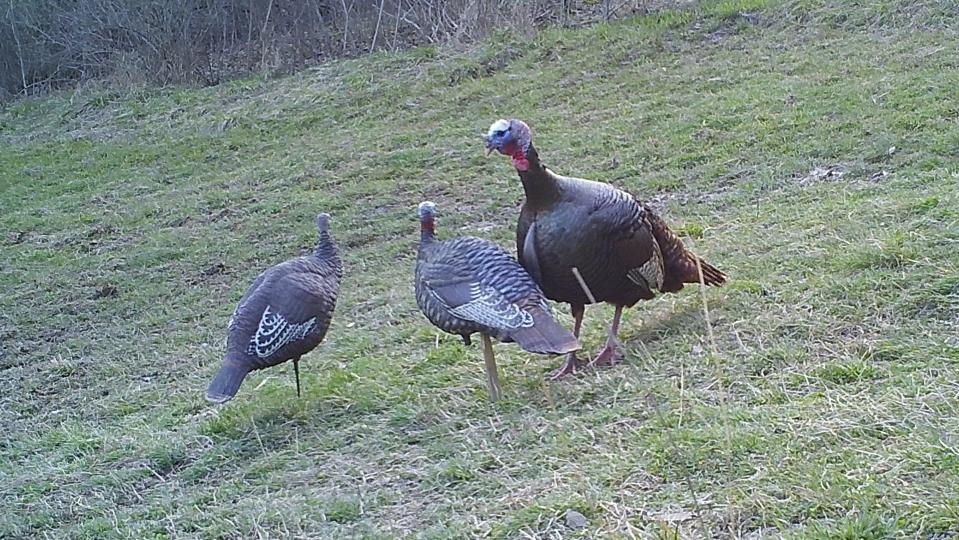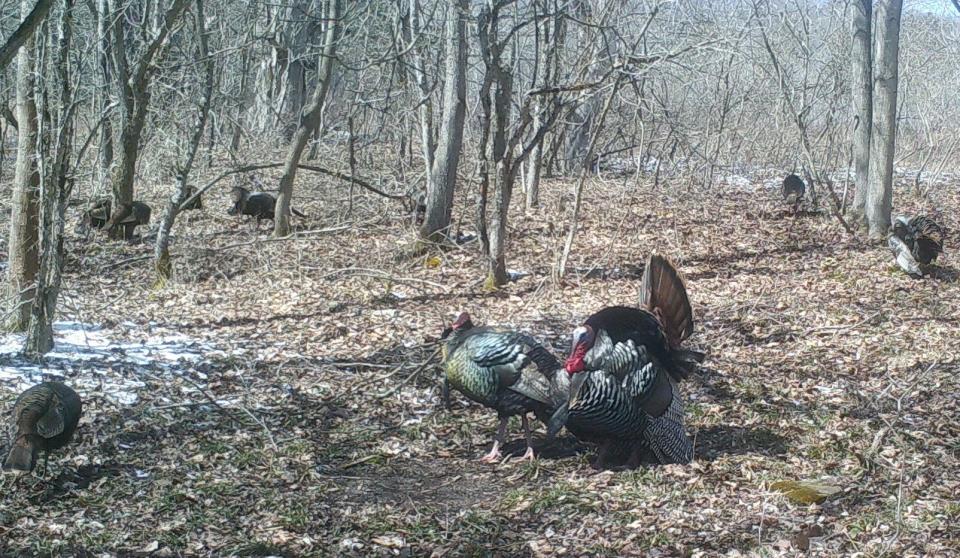How much is too much? What to know before preseason turkey calling
As winter lets go and the days begin to warm, those of us who like to call in turkeys are tempted to get out and run our calls preseason, and maybe even get some video or a photo or two.
But is it wise?
Most experienced gobbler hunters will tell you that a tom turkey will "wise up" in a hurry if it is "worked" too much during pre-season.
"They get edg-y-cated," some say (with the emphasis on the "edgy").
Others, of like mind, on the no-preseason-calling side-of-the-fence chime in that gobblers that suffer from this over-calling syndrome may get spooked to the point of not even gobbling at all.
They call it “call-shy.”
But on the other side of the debate, if a turkey hunter wants to really perfect his or her calling technique and learn what gobblers like and want in a call, the "preseason" is the place to do it.

As we get into March, New York state’s gobbler season is not far away, with the two-day Youth season opening April 22 and 23, followed by the month-long regular gobbler season with its traditional opening May 1 and ending May 31.
Ball players practice, tournament bass fishermen practice, trap-and-skeet shooters practice, musicians practice. Then why not turkey callers?
Well for starters, there are fewer gobblers out there than there were 20 years ago, here in New York state.
In the spring of 2001, the NYS DEC estimated that about 45,000 toms were harvested, a record high take. But after the 2021 season, only 16,892 gobblers were killed. The decline is as obvious as it is troubling.
Long gone are the days when we could fool around with toms during the season.
Back in the 1970s, 80s and 90s, those of us who ran the ridges after toms pretty much had it to ourselves. And we learned to run our calls mostly during the season.
But now, a new turkey hunter, starting out, has their hands full trying to learn how to work a tom in.
For all its accolades and glorious tributes in print and on the TV, turkey hunting can be one of the most frustrating of the outdoor sports, yet one of the most exciting and challenging.
In most hunting areas, if a tom sounds off in May, you can bet your best pair of hunting boots that chances are, at least one other turkey hunter is moving into position on an adjacent ridge, if not already there.
And the more vocal a bird (some toms will, on occasion, gobble and gobble and gobble) the more you can be assured that another gobbler hunter is moving in.
And not just novices are tempted to call pre-season.
Those of us who have had success with a call in the turkey woods, and just love to be out there, are tempted to "tune up" our calls and get back in tune with the woods, after a long winter of too much time spent indoors.
Whitetail rut prediction for 2023:What to expect while deer hunting this fall
More:How the 2022 whitetail rut threw some curves at deer hunters
Gobbler hunting gurus caution, "Don't call too much."
Well, OK.
That makes sense.
But wait a minute.
What's too much?
And we all know that sometimes the only way to call 'em in is to give them all kinds of "cuts and trash-talk."
We learn through experience. Our calls may sound good in the truck or out back of the house, but there is nothing like the confidence found from calling one in.
If good calling is 50 percent of the wild gobbler game, hunting skills, woodsmanship and a tactical approach make up the rest. And despite what hunting shows say, you can't learn hunting skills in the backyard or from the TV.

Preseason calling is the proverbial two-edged knife.
As we learn, so do the toms.
That's right. Some turkey hunters work off the premise that each hen has a different voice, a different tone. And wise old toms learn each one of the girls in his area. And it follows that this Alpha gobbler hears a call and links it to a camouflaged human being, by being spooked after a close encounter, they don't forget.
That bird might have found itself roosting in your freezer if he hadn't been "wised up" before the season.
Turkey hunting is an emotional enterprise. What else could pull us out of our warm beds at 4 a.m. into a wet, dark woods? Turkey hunting beats us 'til our eyes bag and all we want to do is sleep.
And for many of us, calling them in is the primary excitement and fun. Killing one is actually secondary.
So in answer to the question, to call preseason or not, "Go for it."
But try not to spook them when they come in.
It's OK to train "your" birds, but I hope you don't educate "my birds."
Besides, when a tom "hangs up" for me during the season, which it surely will, and then "shuts up" and is never heard of again, I'll have a quick and handy excuse.
"Darn preseason turkey callers. Don't know what they are doing! They wised up another tom, and that's why he didn't come in to my call!"
— Outdoors columnist Oak Duke writes a weekly column.
This article originally appeared on The Evening Tribune: What to know before preseason turkey calling; how much is too much?

